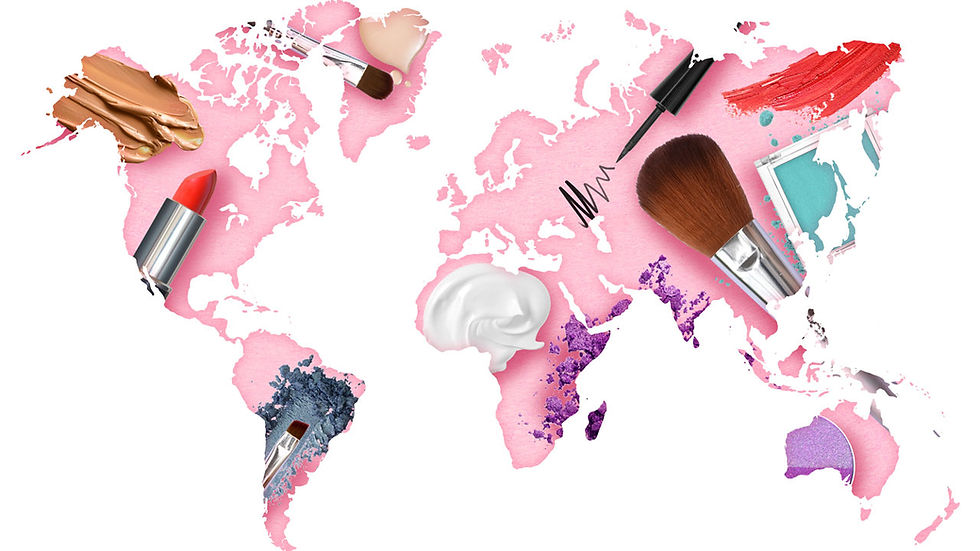- Joan Driggs

- Sep 27, 2022
- 3 min read
By Randi Kronthal-Sacco, NYU Stern Center for Sustainable Business, and Joan Driggs, IRI
IRI and the NYU Stern Center for Sustainable Business have just released a report that highlights key data from the fourth annual CSB Sustainable Market Share Index™ and new survey data on consumer perception and actual purchases of sustainability-marketed CPG products. And the results reveal a growing consumer demand for sustainable products that shows no signs of decelerating anytime soon.
In the coming months, we expect ongoing growth in entertaining at home, a desire among a cooking-fatigued populace for more convenient meal solutions, and the ongoing need to solve for more meal occasions at home. Solving for all these shopper needs should be a top priority.
Manufacturers have noticed and are working to meet this growing demand. Nearly half (48%) of all new products released in 2021 offered sustainability benefits, up 20 percentage points from 2017. The introduction of more sustainable products, in turn, is creating a kind of virtuous cycle for these products. IRI’s June 2022 OmniConsumer™ survey found that the top reason consumers say they choose sustainable products is for their environmental impact (44% of consumers surveyed). But the second reason is simply that there are more sustainable options available (40%), and the third is that there are more sustainable options that work just as well (34%).
This suggests that if you make more sustainable products, market them effectively and don’t sacrifice product performance in making them sustainable, consumers will buy them. And they generally are willing to pay a premium to do so.
Among 2021’s sustainability-marketed products, the overwhelming majority of product categories — among the 36 categories included in the study — exhibited price premiums that ranged from 8% to 136% over their conventionally marketed counterparts. Categories commanding high premiums included:
Cookies (116%)
Dinner entrées (86%)
Pet food (82%)
Sanitary napkins (60%)
Interestingly, all of these categories are also ones in which millennials over-index for sustainable product purchases compared to older generations. While this younger cohort still does not have the purchasing power of its Gen X and baby boomer counterparts, our most recent research shows that the youngest consumers value sustainable attributes more highly and are willing to pay for them.
Some of the generational differences in attitudes toward sustainable products are subtle. For instance, 27% of shoppers overall seek out retailers that carry sustainable products, versus 32% of Gen Zers and millennials. And 17% of shoppers overall seek out retailers that are devoted to sustainable business practices, versus a slightly higher 20% of Gen Zers and millennials. But the willingness of younger shoppers to try new sustainable products is much higher.
And when we look at online shoppers — a group overrepresented by younger consumers — 84% say that the sustainability of products is important when shopping online. And 50% of consumers say that they want sustainable information that includes a list of ingredients for every item, information on where the item was made or grown, and information about the recyclability of the packaging that will be delivered.
The research identified products as sustainability-marketed based on the marketing of one or more sustainable attributes. But as the survey results just mentioned indicated, we are also increasingly seeing evidence that consumers — especially younger ones — are becoming more informed about these products as they become more interested in them.
Sustainability has become table stakes in this environment. Letting consumers know about the sustainable aspects of your products can be hugely beneficial. But it must also be more than just a marketing tactic. As consumers become savvier sustainable shoppers, they are also increasingly demanding and choosing products that exhibit proof of sustainability. As the report notes, products featuring third-party certifications represent a growing percentage of sustainable product growth. CPG products that are certified cruelty-free are outpacing products with other health and wellness claims. And carbon-labeled products alone saw their sales increase from $1.7 billion in 2020 to $5.1 billion in 2021.
In this sustainability-focused environment, brands that have sustainability at their core and within their value proposition will be positioned best to win over competitors that treat sustainability as a box-checking or risk-management tactic. The popularity of sustainably marketed products among young consumers points to an enduring demand. It’s a demand that every brand and retailer should respond to with true product innovation, authentic communication and a real commitment — because that’s what the most important consumers of the future expect.
To learn more, watch our webinar on Sustainability and the Consumer or contact your IRI representative or IRI@IRIworldwide.com.

































